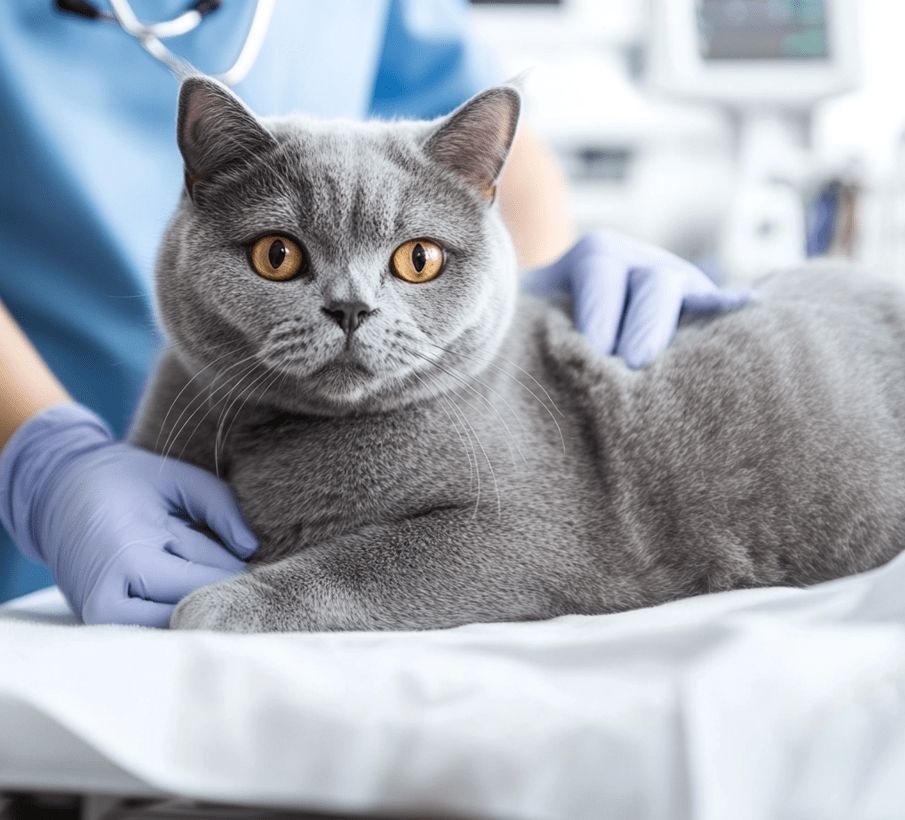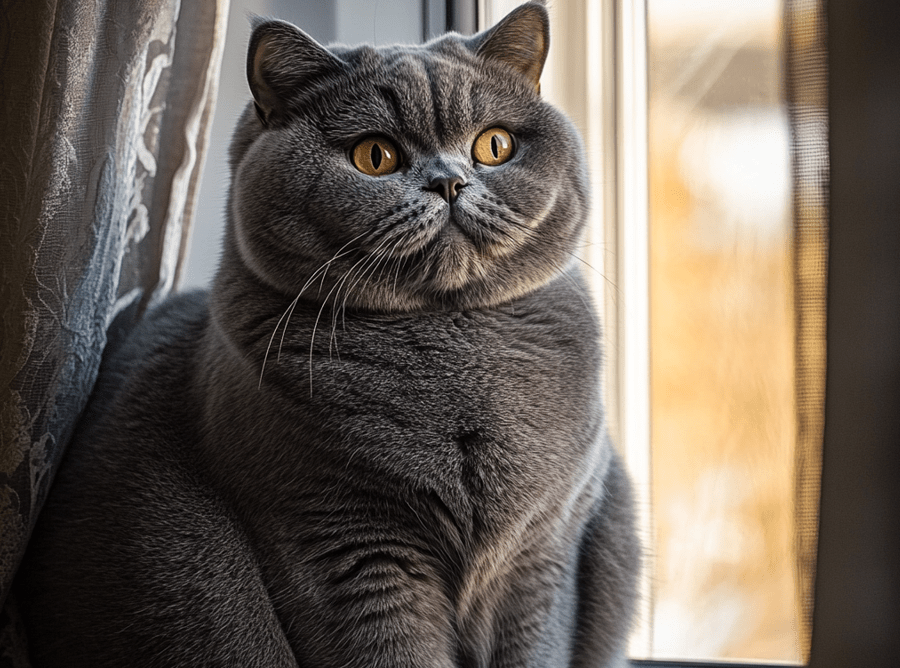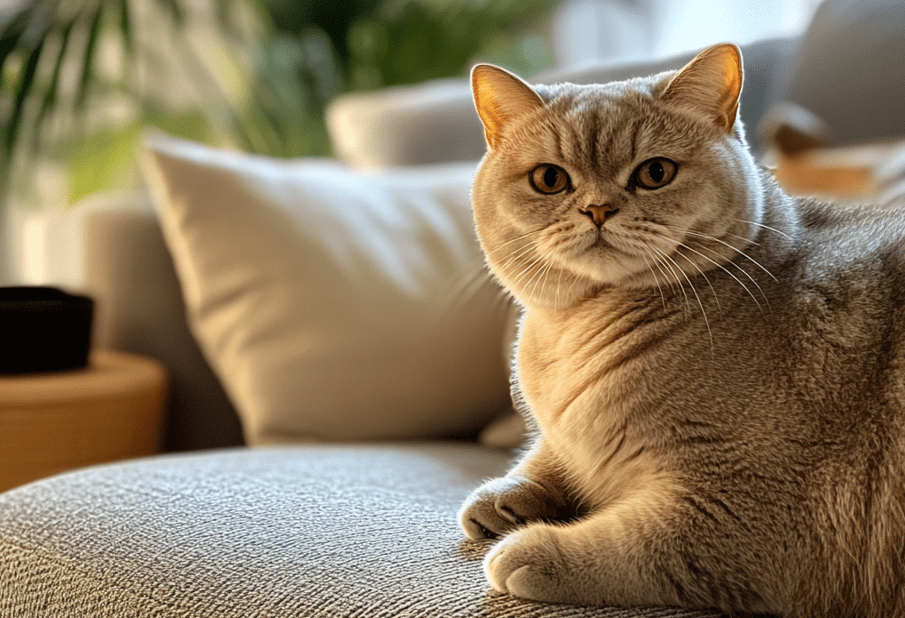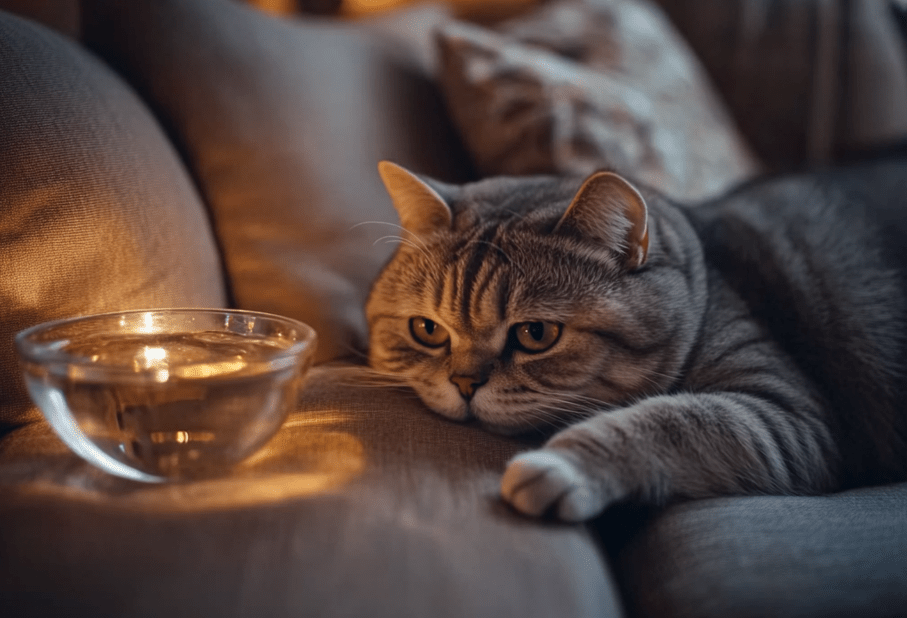
Hypertrophic cardiomyopathy (HCM) is a serious heart condition that affects many cat breeds, including the beloved British Shorthair Cat. Known for their plush coats, round faces, and gentle temperaments, British Shorthairs are prone to this genetic disease, which can impact their quality of life if not managed properly. Understanding hypertrophic cardiomyopathy in British Shorthairs is essential for owners to ensure early detection, effective management, and a longer, healthier life for their feline companions. This comprehensive guide will explore what HCM is, its causes, symptoms, diagnosis, treatment options, and practical steps owners can take to care for a British Shorthair with this condition.
This article aims to empower British Shorthair Cat owners with clear, actionable information, blending veterinary insights with practical advice. Whether you’re a new pet parent or an experienced owner, this guide will help you navigate the complexities of HCM and provide the best care for your cat.
What Is Hypertrophic Cardiomyopathy?
Hypertrophic cardiomyopathy (HCM) is the most common heart disease in cats, characterized by the thickening of the heart muscle, particularly the left ventricle. This thickening makes it harder for the heart to pump blood efficiently, potentially leading to heart failure, blood clots, or sudden death if left untreated. In British Shorthairs, HCM is often hereditary, meaning it can be passed down through generations, making it a critical concern for breeders and owners alike.
Why British Shorthairs Are at Risk
British Shorthair Cats have a genetic predisposition to HCM, with certain bloodlines carrying mutations in genes like MYBPC3, which is linked to the disease. While not all British Shorthairs will develop HCM, the prevalence is higher in this breed compared to others, such as the Siamese or Abyssinian. Factors like stress, obesity, and age can also exacerbate the condition, making proactive care essential.
Causes of Hypertrophic Cardiomyopathy in British Shorthairs
Understanding the causes of HCM in British Shorthairs can help owners take preventive measures and make informed decisions about their cat’s health.

Genetic Factors
HCM is primarily a genetic condition in British Shorthairs. Research has identified specific gene mutations that increase the likelihood of developing HCM. These mutations affect the proteins responsible for heart muscle contraction, leading to abnormal thickening over time. Responsible breeders often screen their cats for HCM to reduce the risk of passing it on, but genetic testing isn’t foolproof, and not all carriers show symptoms.
Secondary Causes
While genetics play the biggest role, other factors can contribute to or worsen HCM in British Shorthairs:
Hypertension: High blood pressure can strain the heart, mimicking or aggravating HCM.
Hyperthyroidism: An overactive thyroid can increase heart workload, potentially triggering heart muscle changes.
Obesity: Excess weight puts additional stress on the heart, worsening symptoms in cats with HCM.
Stress: Chronic stress may exacerbate heart issues, especially in sensitive British Shorthairs.
Age and Gender
HCM can develop at any age, but it’s most commonly diagnosed in middle-aged to older British Shorthairs (5–10 years). Male cats are often at higher risk due to hormonal differences that may influence heart muscle growth.
Symptoms of Hypertrophic Cardiomyopathy in British Shorthairs

Recognizing the symptoms of HCM is crucial for early intervention. Unfortunately, British Shorthairs with HCM may show no signs in the early stages, earning the disease the nickname “silent killer.” As the condition progresses, symptoms may include:
Lethargy: Your cat may seem less playful or tire quickly during activity.
Rapid or Labored Breathing: Difficulty breathing or panting after minimal exertion can indicate heart issues.
Loss of Appetite: A sudden disinterest in food may signal discomfort.
Weakness or Collapse: Fainting spells or sudden weakness can occur due to poor blood flow.
Hind Limb Paralysis: A blood clot (thromboembolism) caused by HCM can block blood flow to the legs, causing pain and immobility.
Irregular Heartbeat: You may notice an abnormal rhythm if you feel your cat’s chest.
Coughing: Though less common, coughing can occur due to fluid buildup in the lungs.
If you observe any of these symptoms in your British Shorthair, contact your veterinarian immediately. Early detection can make a significant difference in managing HCM.
Diagnosing Hypertrophic Cardiomyopathy in British Shorthairs
Diagnosing HCM requires a combination of veterinary expertise and specialized tests. Because British Shorthairs may not show symptoms until the disease is advanced, regular checkups are vital for early detection.
Veterinary Examination
Your veterinarian will start with a physical exam, listening to your British Shorthair’s heart for murmurs or irregular rhythms. A heart murmur isn’t definitive proof of HCM, but it’s a red flag that warrants further investigation.
Diagnostic Tests
To confirm HCM, your vet may recommend:
Echocardiogram: This ultrasound of the heart is the gold standard for diagnosing HCM. It shows the thickness of the heart muscle, blood flow, and any abnormalities.
Electrocardiogram (ECG): An ECG measures the heart’s electrical activity, detecting arrhythmias.
Chest X-Rays: X-rays can reveal heart enlargement or fluid in the lungs.
Blood Tests: These check for underlying conditions like hyperthyroidism or kidney disease that may mimic HCM symptoms.
Genetic Testing: While not widely available for all cats, genetic tests can identify HCM-related mutations in some British Shorthairs.
Screening for Asymptomatic Cats
If you own a British Shorthair, especially from a line with a history of HCM, consider annual echocardiograms starting at 1–2 years of age. Screening can catch HCM before symptoms appear, allowing for earlier management.
Treatment Options for Hypertrophic Cardiomyopathy in British Shorthairs
There is no cure for HCM, but treatment can manage symptoms, slow disease progression, and improve your British Shorthair’s quality of life. Treatment plans are tailored to the cat’s symptoms and the severity of the condition.
Medications
Common medications for HCM include:
Beta-Blockers (e.g., Atenolol): These slow the heart rate, reducing strain on the heart muscle.
ACE Inhibitors (e.g., Enalapril): These lower blood pressure and improve blood flow.
Diuretics (e.g., Furosemide): Diuretics reduce fluid buildup in the lungs or abdomen.
Anticoagulants (e.g., Clopidogrel): These prevent blood clots, a common complication of HCM.
Always follow your veterinarian’s dosing instructions, as improper use can harm your cat.
Lifestyle Changes
In addition to medication, lifestyle adjustments can support your British Shorthair’s heart health:
Weight Management: Keep your cat at a healthy weight to reduce heart strain. Feed a balanced, portion-controlled diet and avoid high-sodium foods.
Stress Reduction: Minimize stress by maintaining a calm environment and a consistent routine.
Limited Activity: While gentle play is beneficial, avoid overexertion, especially if your cat has advanced HCM.
Emergency Care
HCM can lead to life-threatening complications like heart failure or thromboembolism. If your British Shorthair shows signs of distress (e.g., open-mouth breathing, collapse, or paralysis), seek emergency veterinary care immediately.
Caring for a British Shorthair with Hypertrophic Cardiomyopathy
Living with a British Shorthair diagnosed with HCM can be challenging, but with proper care, many cats live fulfilling lives. Here are practical tips to support your cat:

Regular Veterinary Monitoring
Schedule follow-up visits every 3–6 months or as recommended by your vet. Regular echocardiograms and bloodwork help track the disease’s progression and adjust treatments as needed.
Monitor Symptoms at Home
Keep a daily log of your cat’s behavior, appetite, and breathing patterns. Subtle changes, like increased lethargy or reduced grooming, may indicate worsening HCM. Use a pet camera to observe your cat when you’re not home.
Create a Heart-Friendly Environment
Make your home comfortable and low-stress:
Elevated Resting Spots: Provide soft beds or perches that don’t require jumping if mobility is limited.
Litter Box Access: Ensure litter boxes are easily accessible, especially for older cats or those with weakness.
Quiet Spaces: Offer a calm retreat where your cat can relax without disturbances.
Diet and Nutrition
Feed a high-quality, low-sodium diet to support heart health. Wet food is often recommended for its high moisture content, which aids hydration and kidney function. Avoid treats with artificial additives or high salt content.
Emotional Support
British Shorthairs are affectionate and thrive on companionship. Spend quality time with your cat through gentle petting or quiet play to boost their mood and reduce anxiety.
Preventing Hypertrophic Cardiomyopathy in British Shorthairs
While HCM is largely genetic and not fully preventable, owners can take steps to reduce risks and promote heart health:
Choose a Reputable Breeder
If you’re adopting a British Shorthair kitten, select a breeder who screens their breeding cats for HCM using echocardiograms and genetic tests. Ask for health records and avoid breeders who don’t prioritize heart health.
Maintain a Healthy Weight
Obesity exacerbates HCM symptoms, so keep your British Shorthair at an ideal weight (BCS 4–5 on a 9-point scale). Measure food portions, limit treats, and encourage gentle exercise.
Regular Vet Checkups
Annual veterinary exams, including heart auscultation, can catch early signs of HCM or related conditions like hypertension. For high-risk British Shorthairs, consider proactive screening with an echocardiogram.
Genetic Awareness
If your British Shorthair is a carrier of HCM-related mutations, avoid breeding them to prevent passing the condition to offspring. Discuss genetic testing options with your vet or breeder.
Common Myths About Hypertrophic Cardiomyopathy in British Shorthairs
Misinformation about HCM can lead to confusion. Let’s debunk some common myths:
Myth: Only old British Shorthairs get HCM.
Fact: HCM can affect cats of any age, including young adults.
Myth: A heart murmur always means HCM.
Fact: Murmurs can have other causes, like stress or anemia. An echocardiogram is needed for a definitive diagnosis.
Myth: HCM is always fatal.
Fact: With proper management, many cats with HCM live for years with a good quality of life.
Myth: Diet can cure HCM.
Fact: While diet supports heart health, it cannot reverse HCM’s genetic cause.
Conclusion

Understanding hypertrophic cardiomyopathy in British Shorthairs is a vital step toward ensuring your cat’s health and happiness. By recognizing the symptoms, seeking early diagnosis, and following a tailored treatment plan, you can help your British Shorthair live a longer, more comfortable life. Proactive care—through regular vet visits, a heart-healthy lifestyle, and stress management—makes all the difference.
If you suspect your British Shorthair may be at risk for HCM, don’t wait. Consult your veterinarian to discuss screening options and create a care plan. With knowledge and dedication, you can give your British Shorthair Cat the best chance to thrive, heart and soul.



